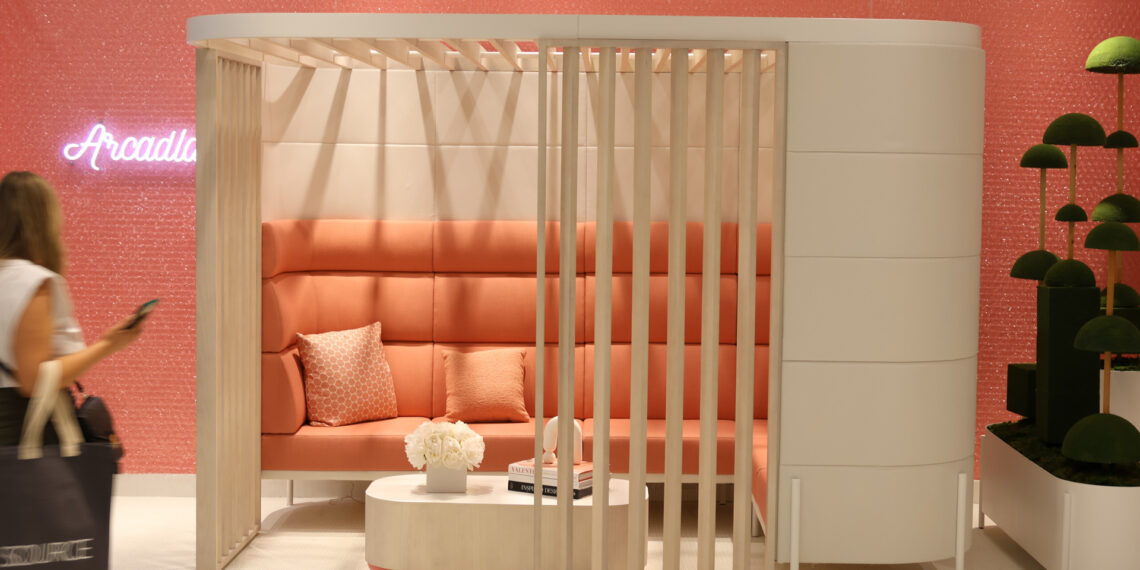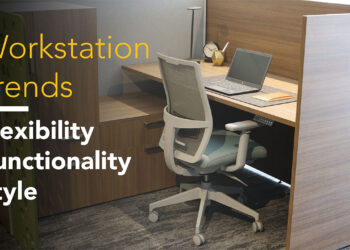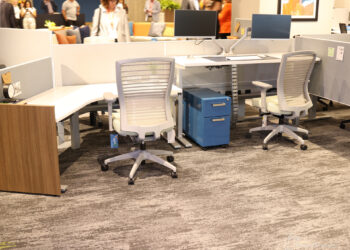Rethinking Collaboration Spaces
One of the top reasons to return to the office is collaboration. Whether it’s working with team members, meeting with supervisors, or engaging with clients, vendors, and partners, collaboration plays a key role in bringing people together. But here’s the thing: when we think about collaboration in the corporate world, the image that comes to mind is usually a conference room or training room. In many small to medium-sized companies, informal or impromptu collaboration spaces are often overlooked—and that needs to change.
The Problem with Traditional Collaboration Spaces
How often does genuine collaboration happen in a large conference room? More often than not, one person leads the conversation while the rest of the room listens or takes notes. True collaboration—the kind where people share ideas and brainstorm solutions—tends to happen in smaller, more casual settings. The physical environment matters, and furniture plays a significant role in setting the tone for collaboration.
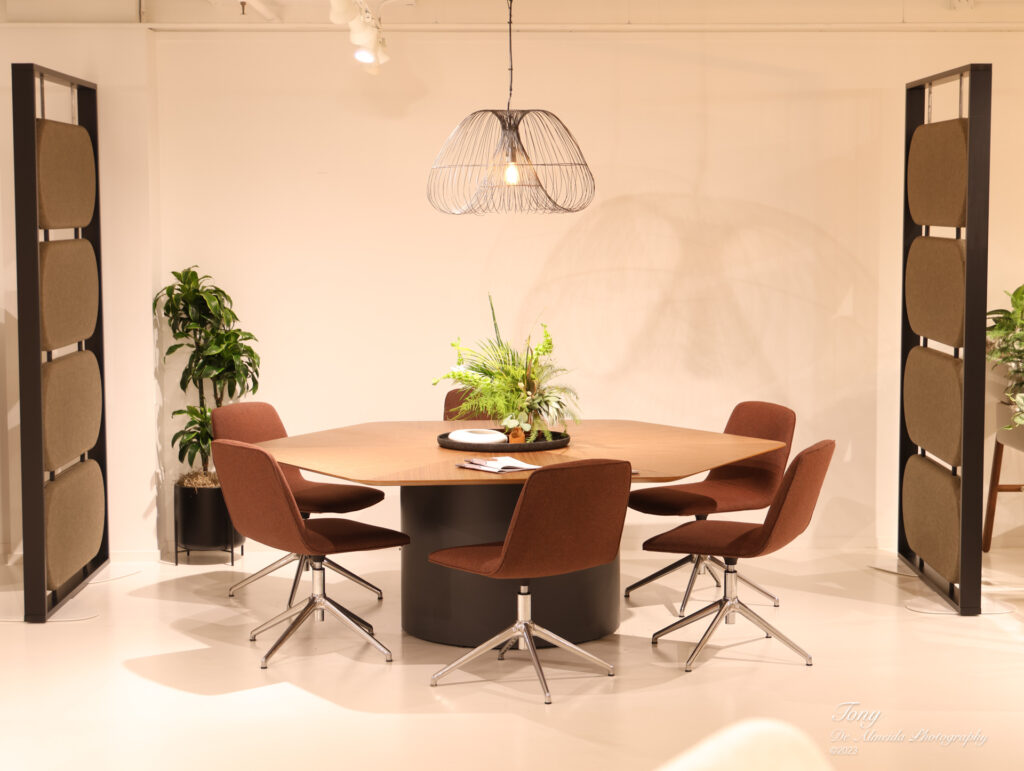
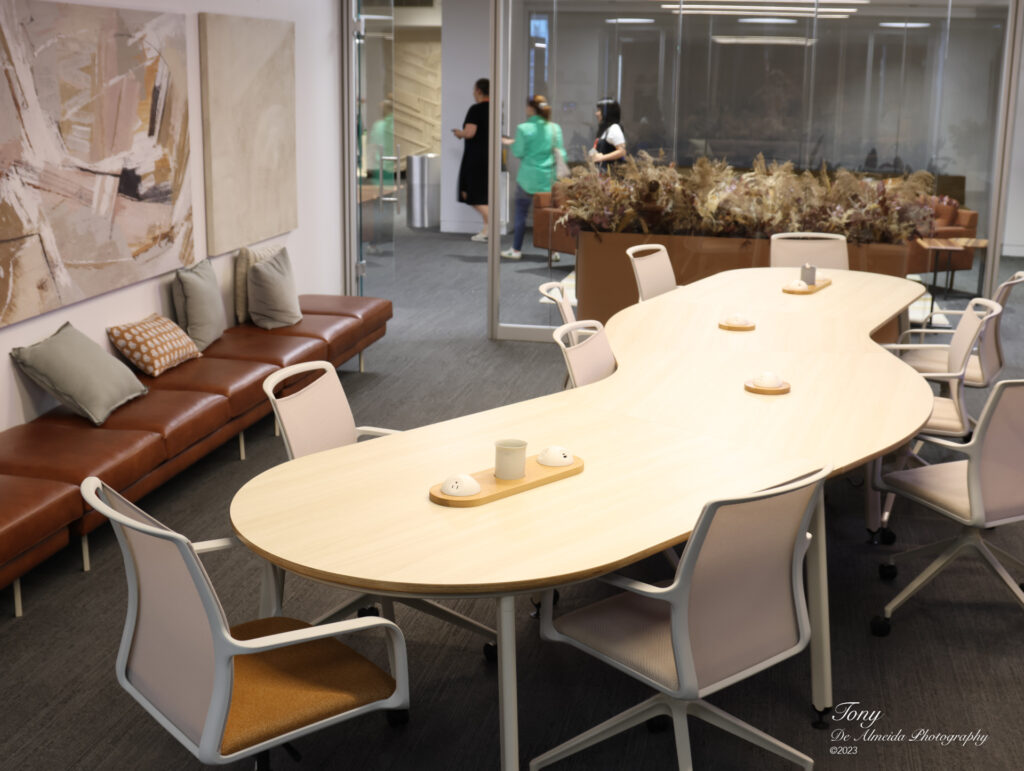
Thinking Beyond Rectangles and Rounds Tables
In smaller collaboration spaces, the standard furniture setup is a rectangular or round table surrounded by 4–6 chairs. It’s functional, sure, but it’s not the only option anymore. Tables now come in all shapes and styles, from hexagonal to S-shaped, offering both creative and functional alternate designs without breaking the bank.
Better yet, consider swapping out the table and chairs for modular or soft seating. Furniture with ‘soft edges’ or ‘organic shapes’ is becoming increasingly popular. Sometimes an informal, comfortable seating area with a smaller desk top is more suitable for sharing ideas and brainstorming than a table and chairs. It’s easy on the eyes, creates a warmer, more inviting look, and encourages people to actually use the space – rather than treating it like a showroom or museum piece.
Add a Splash of Color
Color can make a big difference. Bright, vibrant hues might be perfect for spaces designed for energetic brainstorming sessions, while neutral tones can provide a calming atmosphere for more focused collaboration. Modular furniture that is easily reconfigurable allow teams to adapt the space to their needs, ensuring effective and dynamic collaboration.
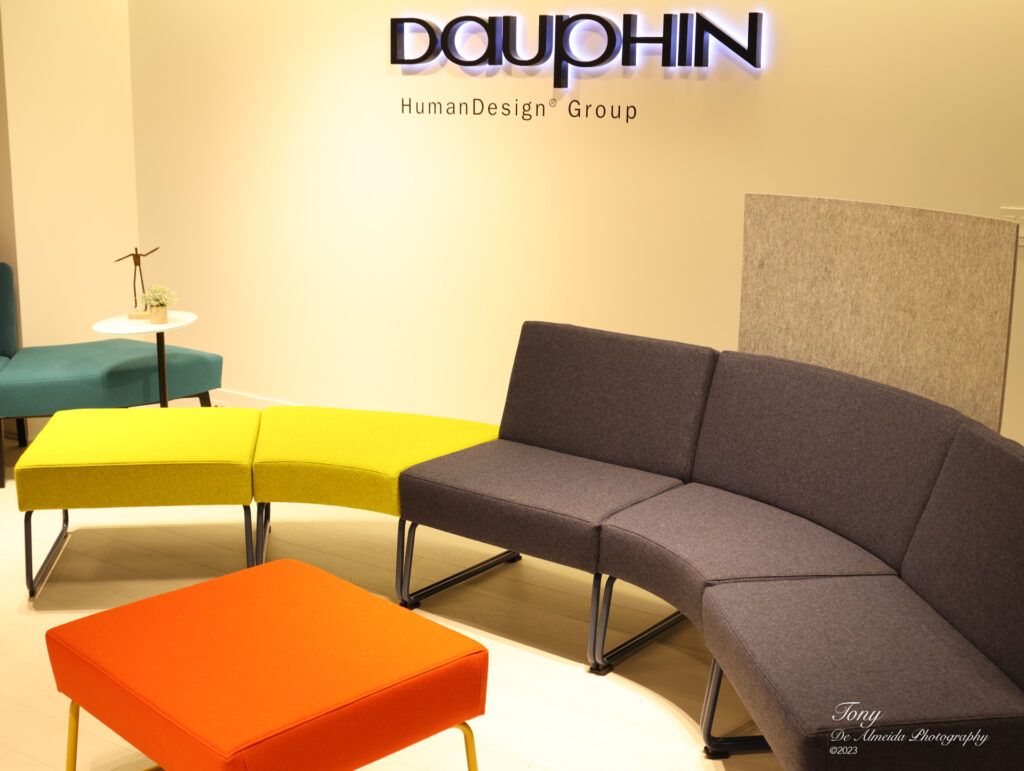
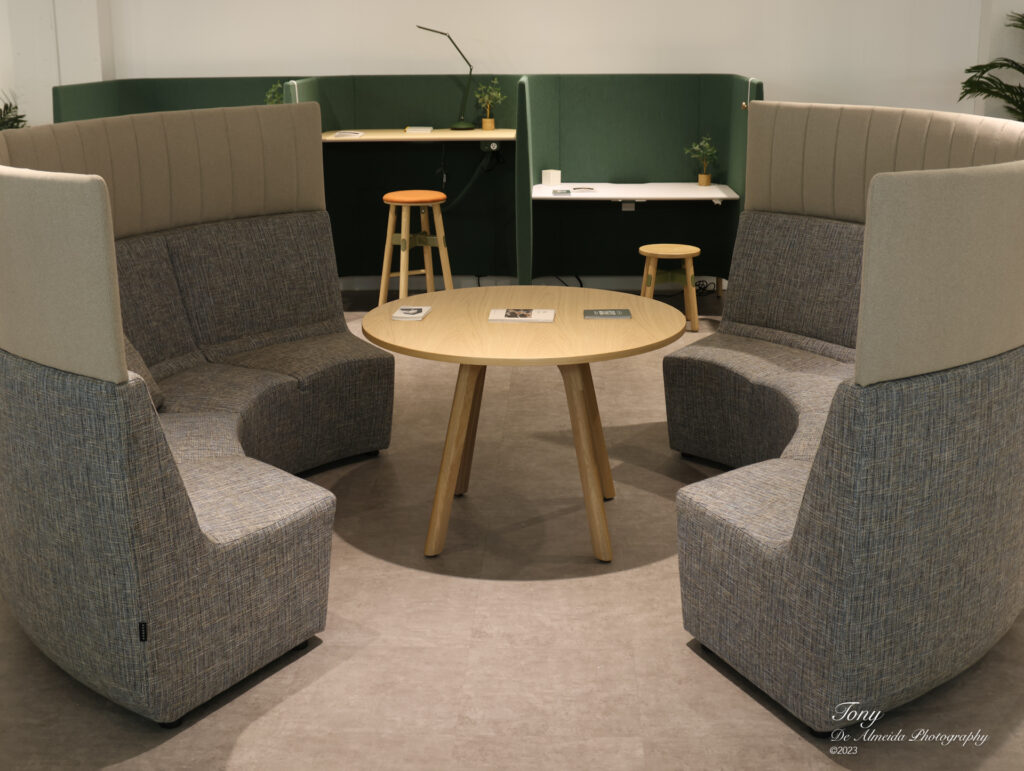
Privacy comes in many forms
Privacy is a critical consideration for collaboration spaces, and it comes in many forms. Semi-private pods are an excellent solution for open office floors where dedicated small conference or huddle rooms are in short supply. Strategically placed pods offer convenient, on-demand spaces for teams to meet without the hassle of scheduling a room.
Modern pods often come equipped with table surfaces, built-in power outlets, for easy device charging, media walls for idea sharing on a wide screen, or even old-school brainstorming on a markerboard. To enhance privacy further, pods can be arranged back-to-back with dividers like plants, storage units, decorative shelving, or demountable walls. These additions create a functional yet visually appealing layout.
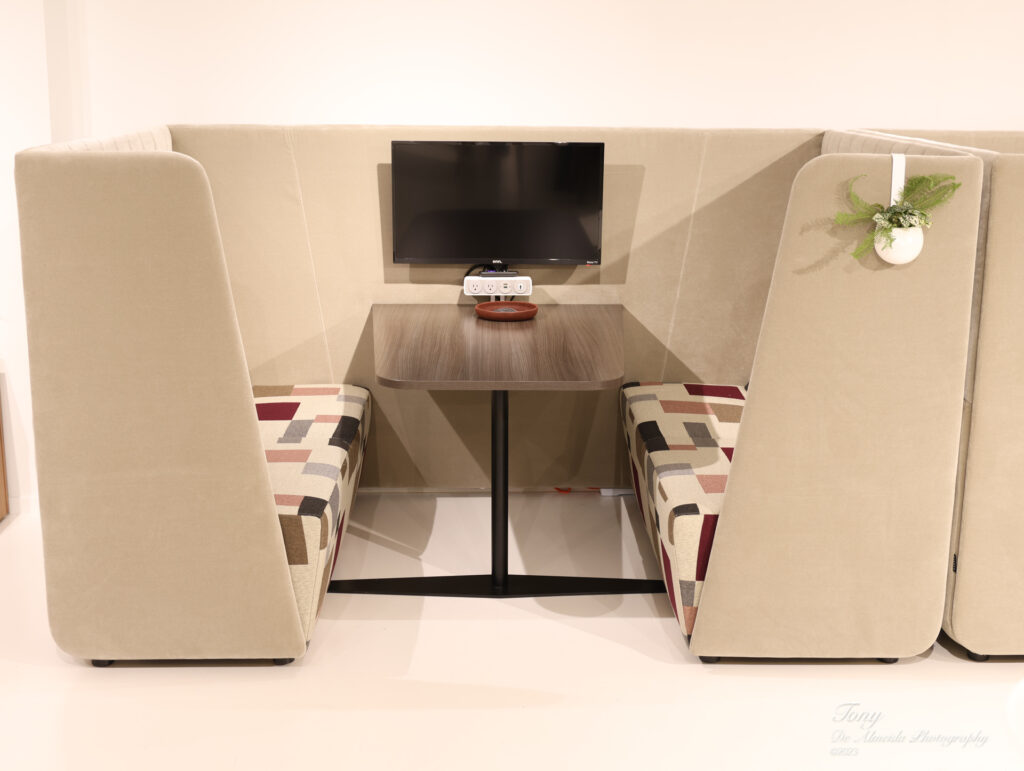
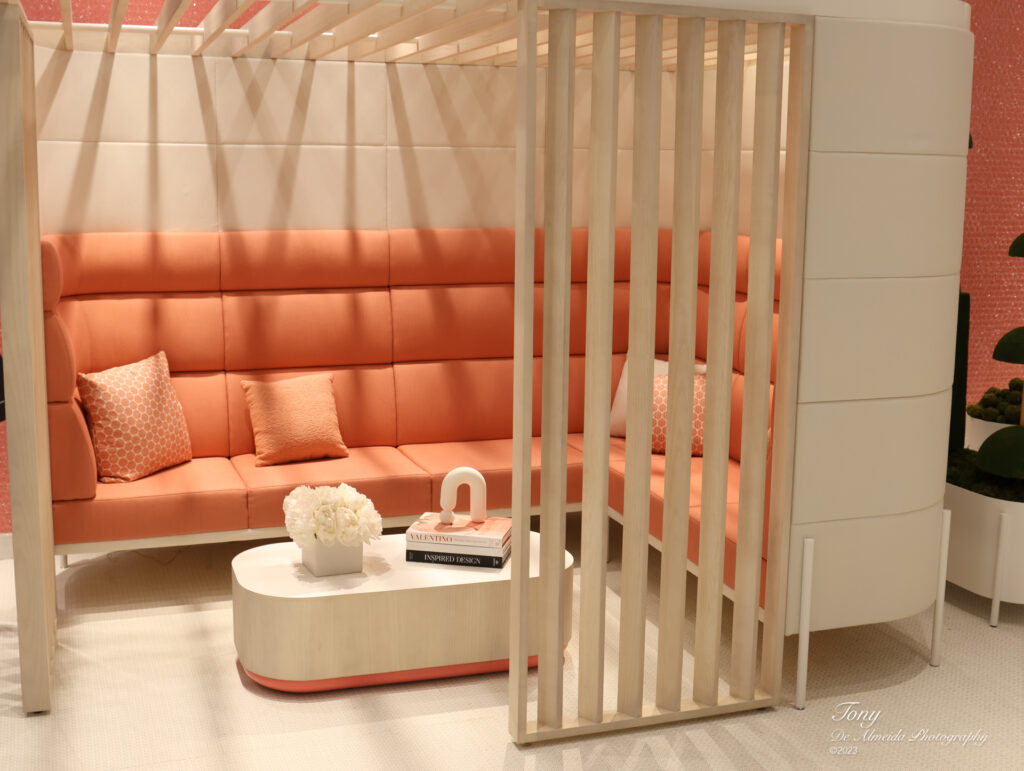
For a touch of elegance, lounge furniture with high backs or built-in screens can provide semi-private spaces that feel both comfortable and intentional. Some manufacturers, like Arcadia, even offer pods with wood slat canopies, adding a luxurious and inviting element to the design.
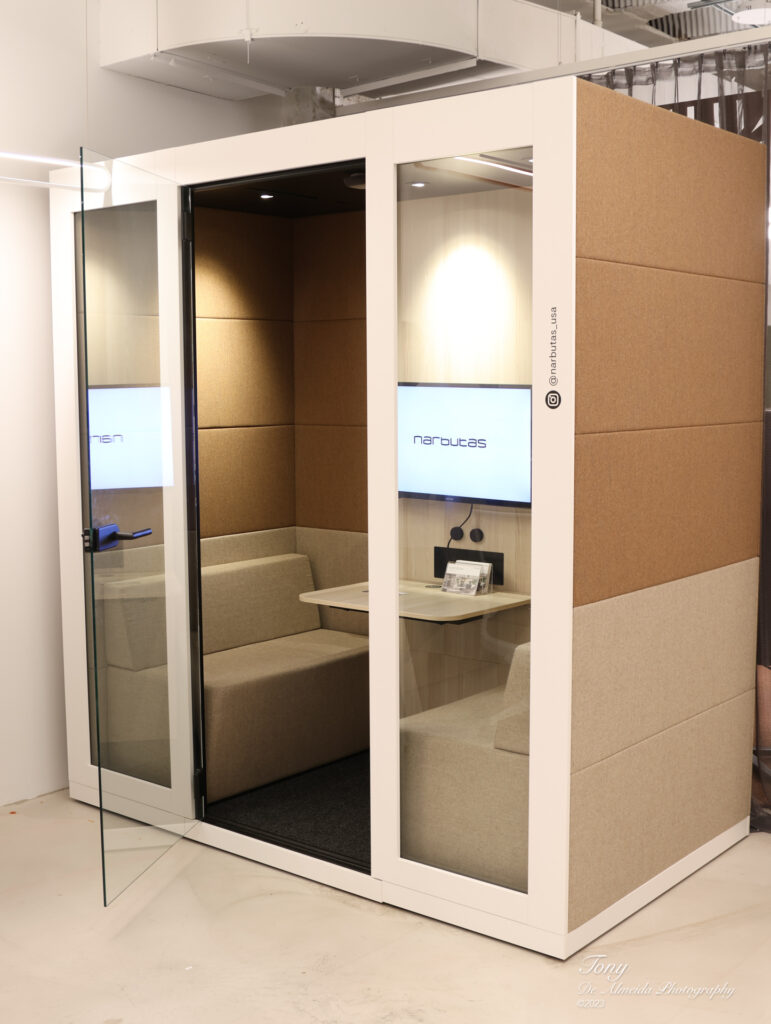
And when complete privacy is essential, phone booths are a fantastic option. No longer just for solo calls, many phone booths now accommodate 2–6 people and come equipped with lighting, ventilation, and charging capabilities.
Creating Spaces That Inspire
These are just some of the ways to rethink collaboration spaces. By moving beyond the standard table-and-chairs setup and embracing innovative furniture solutions, companies can create environments that inspire creativity, foster connection, and make the office a place where people truly want to collaborate.
